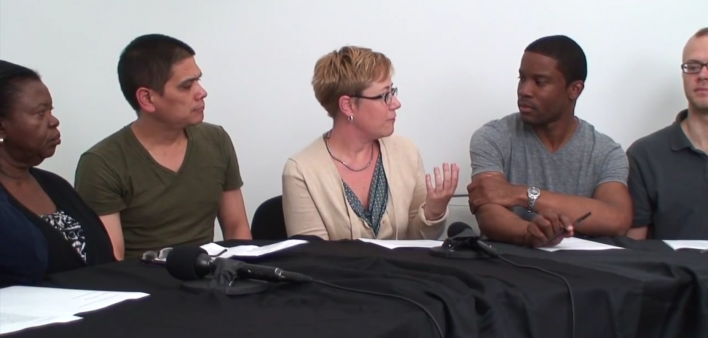We started in the waiting rooms and bars and community centers of the 1980s. People living with HIV found solace together, learned about services, exchanged recipes, took care of each other’s children and pets, discussed possible treatments and rumors of cures, complained about bad medical care, and organized protests and advocacy efforts. We had sex with each other, and made friends, and grieved when someone stopped coming. In the networks, we talked about Bactrim as a prophylactic, far before medical doctors did. In the networks, we discovered serosorting – a way of having sex with other people without concern about spreading HIV. We were not pariahs, nor cautionary tales, untouchable, dirty, or patients. We were people, sharing a common issue.
Networks build community. We make spaces where people can gain support. We work against the HIV stigma so prevalent in the world. We understand the trauma we have been through, and – if we are doing it right – we make a space for that trauma so everyone can participate and find fellowship.
In the past fifteen years, there has been a distinct turn towards funding services designed with medical care as their fulcrum. This turn works against community-building and structural change; clinics can only see us as individual patients with personal problems, rather than people creatively managing trauma, poverty, housing insecurity, homophobia, transphobia, racism, HIV stigma, and more. While we benefit from acceptable, effective and inexpensive medical care, we do not end where our HIV begins. We need community to manage the ways that HIV, and the social factors that put us at risk for HIV in the first place, make life precarious. We need to know there is a space where we belong.
Today, there is a clear revitalization of networks of people living with HIV. We are finding each other again, talking about politics, treatments, quality of life, and quality of medical care. We are raising consciousness around HIV criminalization laws; we are taking part in the fights to advance health care; we are finding each other again. This resurgence of networks is not always smooth, and it’s barely resourced. Nevertheless, it’s happening.
My colleague, Devin Hursey, a Missouri-based advocate, points out the people living with HIV spaces should be protected and recognized within the community and in institutions. He’s quick to point out that — too often — the spaces that we do have are meant to educate us; we do not have agency in addressing the community or institution where we are housed.
I serve as the Chair of the United States People living with HIV Caucus. We emerged because the one national organization for people living with HIV — NAPWA — had shut its doors. But our voices still needed to be heard. The national networks of people living with HIV — Sero Project, International Community of Women living with HIV/North America, Positive Women’s Network-USA, Global Network of People with HIV/AIDS-North America and the now defunct Campaign 2 End AIDS — came together to form the HIV Caucus. Our organizational and individual membership is diverse, and we strive to ensure that the community voice of people living with HIV has integrity, remains independent, and is deliberately inclusive. It’s not easy — we are largely volunteers, and the HIV Caucus does not even have a tax identity — but we believe that the voice of people living with HIV is just as important today as we were 30 years ago.
In this blog, I hope to share some of our work and conversations — in the hopes that we can widen our reach, and pull you into dialogue and community with us.








7 Comments
7 Comments